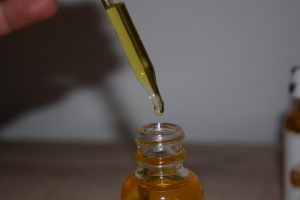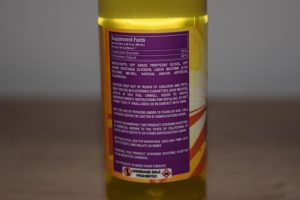Vaping Flavored E-Liquid May Not Be Completely Harmless, New Study Finds
In case any of you were naive enough to believe that inhaling a vaporized cocktail of vegetable glycerine, propylene glycol and various flavorings was completely risk-free, prepare to have your bubble burst.
 A recent study conducted by researchers at the University of North Carolina School of Medicine, found that some of the ingredients found in e-liquids may be more dangerous than previously thought. Some popular flavorings, for example, can be more toxic to human cells than nicotine, and a lot more dangerous than vegetable glycerine and propylene glycol. Another interesting finding was that some flavorings are more toxic than others.
A recent study conducted by researchers at the University of North Carolina School of Medicine, found that some of the ingredients found in e-liquids may be more dangerous than previously thought. Some popular flavorings, for example, can be more toxic to human cells than nicotine, and a lot more dangerous than vegetable glycerine and propylene glycol. Another interesting finding was that some flavorings are more toxic than others.
With a reported 7,700 types of e-liquid currently available to consumers, researchers needed to come up with a rapid screening technique to deduce the toxicity of different e-liquids. So they devised a system based on standard toxicology that did just that. According to a press release published by EurekAlerts, “plastic plates arrayed with hundreds of tiny wells in which fast-growing human cells are exposed to different e-liquids. The more these liquids reduce the cells’ growth rates, the greater their toxicity.”
A total of 148 different e-liquids were tested during the study, and one of the most interesting things researchers discovered was that they each contained a total of 143 chemicals on average, which suggests that ingredients commonly used in the production of e-liquids are extremely diverse. Another interesting finding was that the more chemicals an e-liquid contained, the more toxic it tended to be.
“We found that e-liquid ingredients are extremely diverse, and some of them are more toxic than nicotine alone and more toxic than just the standard base ingredients in e-cigarettes – propylene glycol and vegetable glycerin,” said lead study author Robert Tarran, an associate professor of cell biology and physiology at the University of North Carolina School of Medicine.
Out of all the flavorings tested, vanilin (a popular ingredient in vanilla-flavored e-liquid) and cinnamaldehyde (a chemical used in cinnamon flavorings) were linked with higher toxicity values. It’s worth mentioning that other studies have identified cinnamon-flavored e-liquids as being among the most dangerous to heart muscles.
Here’s the big problem, though. Even when analyzing nicotine and flavorings-free e-liquid (basically just vegetable glycerine and propylene glycol), researchers observed significantly reduced growth of the test cells, which also indicated high toxicity. So even though flavorings may enhance toxicity even more, vaping just the e-liquid base is apparently hazardous to your health.
One of the major shortcomings of this study is that it was conducted on lab-grown cells, so it doesn’t really show the health effects of vaping on actual users. However, Prof. Tarran and his team feel that the tests they conducted suggest vaping could cause serious lung diseases, such as cystic fibrosis and chronic obstructive pulmonary disease (COPD).
Another controversial aspect of this research is that the cells – human tissue culture cells, lung cells and upper airway cells – were exposed to e-liquids in liquid form, to make the toxicity screening relatively fast. Researchers did however expose some of the cells to vaporous puffs of e-liquids as well, and reported that the toxicity remained largely the same.
In conclusion, this study found that vaping in general is highly toxic to lab-grown human cells, but that some e-liquids tend to be more toxic than others. Researchers also created an online database of e-liquids, where you can check how toxic your favorite e-liquids are, based on their toxicity screening method.
“We have this tool and it’s very fast and reliable, and we now plan to use it on a wider scale,” co-author M. Flori Sassano said. “There are more than 7,700 e-liquid products out there, and regulators as well as the general public should know more about the ingredients they contain and how toxic they might be.”
This study was funded by the National Institutes of Health and the Federal Drug Administration.
I will not comment too much on the findings and methodology of this study, as I don’t have the know-how to do so, but I do wonder why the researchers didn’t also compare the toxicity of vaporized e-liquids to that of tobacco smoke. After all, no one ever said vaping was completely harmless, only that it was a less dangerous alternative to smoking. Unfortunately, after reading this study, one is left with the impression that e-cigarette vapor is just as bad, if not worse than tobacco smoke, which other peer reviewed research shows isn’t the case.
Identifying highly toxic ingredients in e-liquid and finding better alternatives is very important, but this study seems to focus more on making vaping seem like just another way to poison yourself, with no benefits when compared with smoking. It seems tobacco harm reduction is of no importance anymore.

















As a former heavy smoker for me vaping became health saver. Never ever thought of ecigs or vaporizer to be harmless. Of course they still have to contain some chemical parts but for me that i stopped smoking matters the most. If i haven´t got Vapour2 for my birthday from my wife i would be probably still spending almost every week with my doctor giving me advises to stop smoking because my heart will collapsed one day:-) No more breathless, full or energy again. Almost on 0% nicotine soon(now 0,6)
Flavors in e-liquids are as toxic as flavors in cheep chewing gums or soft-drinks – nothing new about artificial flavorings – no good for us.
In fact everyday toothpaste is more toxic than most e-liquids. Just read the label on your toothpaste and google out where else are the ingredients are used